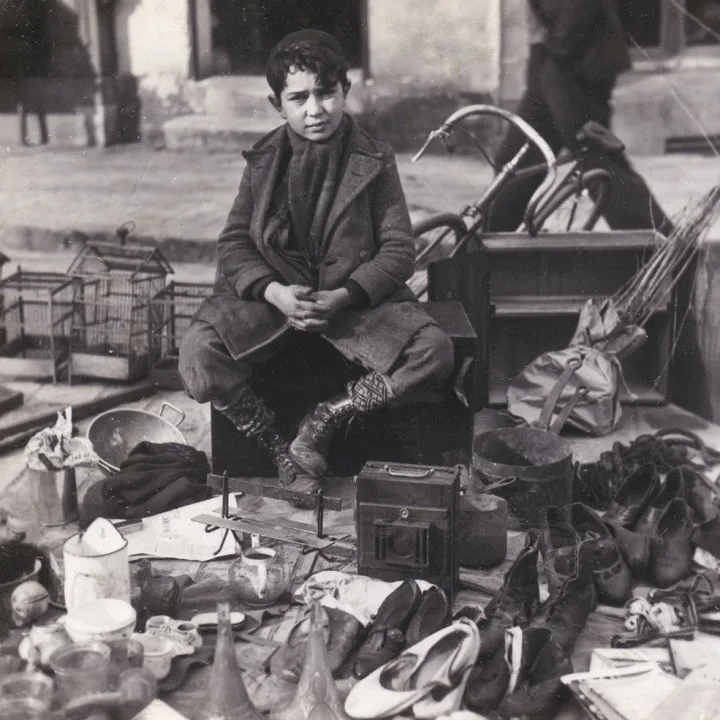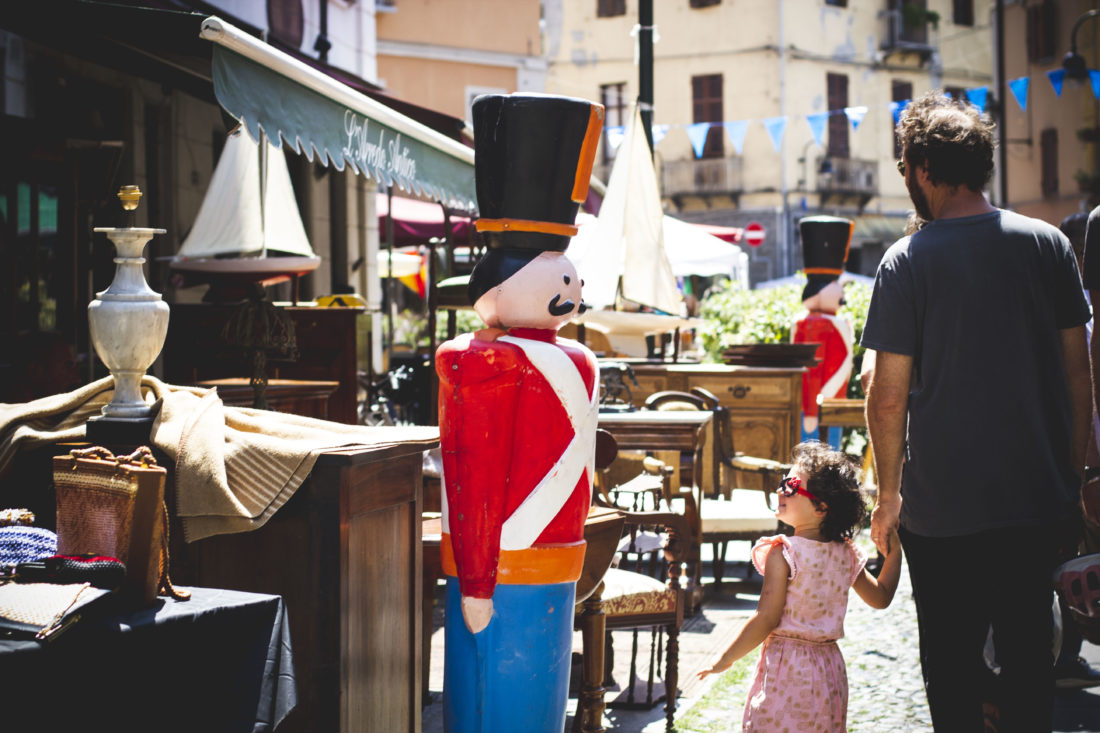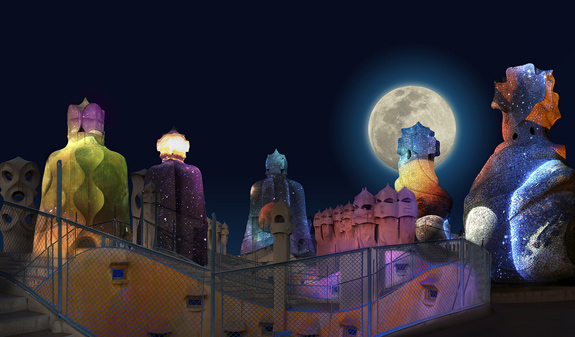Where the term “flea market” was born, marché aux puces in French and flea market in English
Why are thrift markets or antique markets and Vintage markets called flea markets flea markets? Flea Market Marché aux Puces. Each flea market has its own characteristics as does each second-hand market.
The reason why we nicknamed “flea market” a place where second-hand, antique and vintage objects are sold is another of the long series of etymologies that do not have a clear answer, but some plausible and interesting reconstructions.
Although the concept has existed since the 18th century, in fact, the origins of the term “flea market” are disputed. Certainly in every part of the world the flea market is a place where used, vintage, collectible and – in recent years – creatively reused objects are sold or exchanged.

A vintage photo (circa 1860) portraying a young operator of a vintage market in Paris
Theories on the etymology of “Flea Market”
According to one theory, the Fly Market of New York City del 18th Century, located in Maiden Lane near East River in Manhattan,would have begun the association of the term with vintage markets. The land on which the flea market was held was originally a salt marsh with a stream, and by the early 19th century the Fly Market was the main market in the entire city of New York.
A second theory holds that “flea market” is a common English calque of the French “marché aux puces”, which literally translates to “flea market”, labeled as such because the items sold were used and worn, and likely contained really fleas. The first reference to this term appeared in two conflicting stories about a place in Paris in the 1860s that was known as the “marché aux puces”.
The traditional interpretation.
The traditional and most publicized story is in the article “What Is a Flea Market?” of Albert La Farge in the winter 1998 edition of the magazine Today’s Flea Market: “There is general agreement that the term “Flea Market” is a literal translation of the French “marché aux puces”, an open-air bazaar in Paris, France, named for those pesky little pests of the order Siphonaptera ( or “wingless bloodsuckers”) that infested the upholstery of old furniture offered for sale.
A different interpretation on the birth of the term “flea market”.
A second story appeared in the book Flea Markets, published byChartwell Books: “In the time of Napoleon III, the imperial architect Haussmann designed the wide, straight avenues with rows of square houses in the center of Paris, along which army divisions could march with great noise. The plans forced many second-hand goods dealers to flee their old homes; the alleys and slums were demolished. These evicted merchants were however allowed to continue selling their goods right in the north of Paris, just outside the former fort, opposite the Porte de Clignancourt. The first stalls were erected around 1860. The gathering of all these “exiles” from the slums of Paris was soon called the “marché aux puces” which means, precisely, “flea market”.
Another interpretation starts from the possible “confusion” between the English term “flee” (escaped, escaped) with, then, “flea”. Hence “Flea Market” – flea market.
Which is the real story is hard to say, but both theories are fascinating. And whatever the origins of the term, flea markets are now a beloved part of culture around the world.

A photo of the flea market (Marché aux Puces) ofSant Ouen-Clignancourt in Paris.
Everyone really likes the flea market!
Today the “Flea Market” is also known as the “Vintage Market”. Regardless of the origin of flea markets, at least we have never met anyone who didn’t love going to flea markets. A passion of ours that “flows” into 1Solo.com and which unites millions of enthusiasts of Vintage, Antiques, Vintage Objects and Collectors all over the world!
This is a “world” level activity. Every major city in the world has its own second-hand and vintage flea markets that have existed for hundreds of years and could be considered a multi-million dollar global industry that has never been and probably will never be truly defined and which cannot, in fact, be “codified” and the beauty probably also lies in this characteristic “strangeness”.
Flea market: a great opportunity!
Flea markets are an opportunity for anyone to start their own small business. Albert La Farge, author of U.S. Flea Market Directory, he claims: “Today’s American flea market is a modern version of a phenomenon that has endured throughout history in all civilized societies: wherever there is a high concentration of people, there are market days on which to gather to exchange goods.“The market of ancient Greece was theAgorà; in Roma the “Foro“; and in Israel the Temples.

Gran Balon in Torino, one of the largest flea markets in Italy managed by the Association of Balon Traders with which the 1Solo.compproject was born to give an extra opportunity to the operators of the vintage market.
Vintage markets in Italy
Nowadays these flea markets take place in almost every city in Italy and every city has its own second-hand market. These are fairs or small markets where you can find absolutely everything. Indeed, the great paradox of these vintage markets is that, the smaller the city, the higher the probability of finding unobtainable and priceless objects.
Some of the most important flea markets in Italy:
- The Gran Balon in Turin, historic “giant” version of the Balon, the second-hand market which takes place every Saturday, takes place every second Sunday of the month. The official website of the Antiques and Vintage Dealers Association: ww.balon.it
- TheSinigaglia Fair: it is a true institution in Milan. It is an ancient flea market that has animated the Ticinese and Navigli districts since the 19th century: a truly evocative experience of the second-hand market up to high quality antiques and modern antiques.
- The Chiavari market exhibition: The historic center of Chiavari, the splendid Ligurian village overlooking the Tigullio Gulf, is the location of the Chiavari Market Exhibition, an ancient antiques market founded in 1984, which once a month brings together antique dealers and collectors from all over Italy for the Vintage market.
- he Montagnola’s Market in Bologna:in reality it is called the Piazzola market, the second-hand and antiques market in the Emilian capital is known as the “Montagnola market”.
- The Antiques Fair in Arezzo:it is the oldest fair – second-hand market and vintage market – in Italy. It has taken place every first weekend of the month since 1968. Official Website: Arezzo Fair.
Antiques Fair every first Saturday and Sunday of the month in Arezzo the second-hand and antiques market takes place in the splendid architectural setting of Piazza Grande, the heart of the Tuscan city, which is artistically “invaded” by the vintage market.




